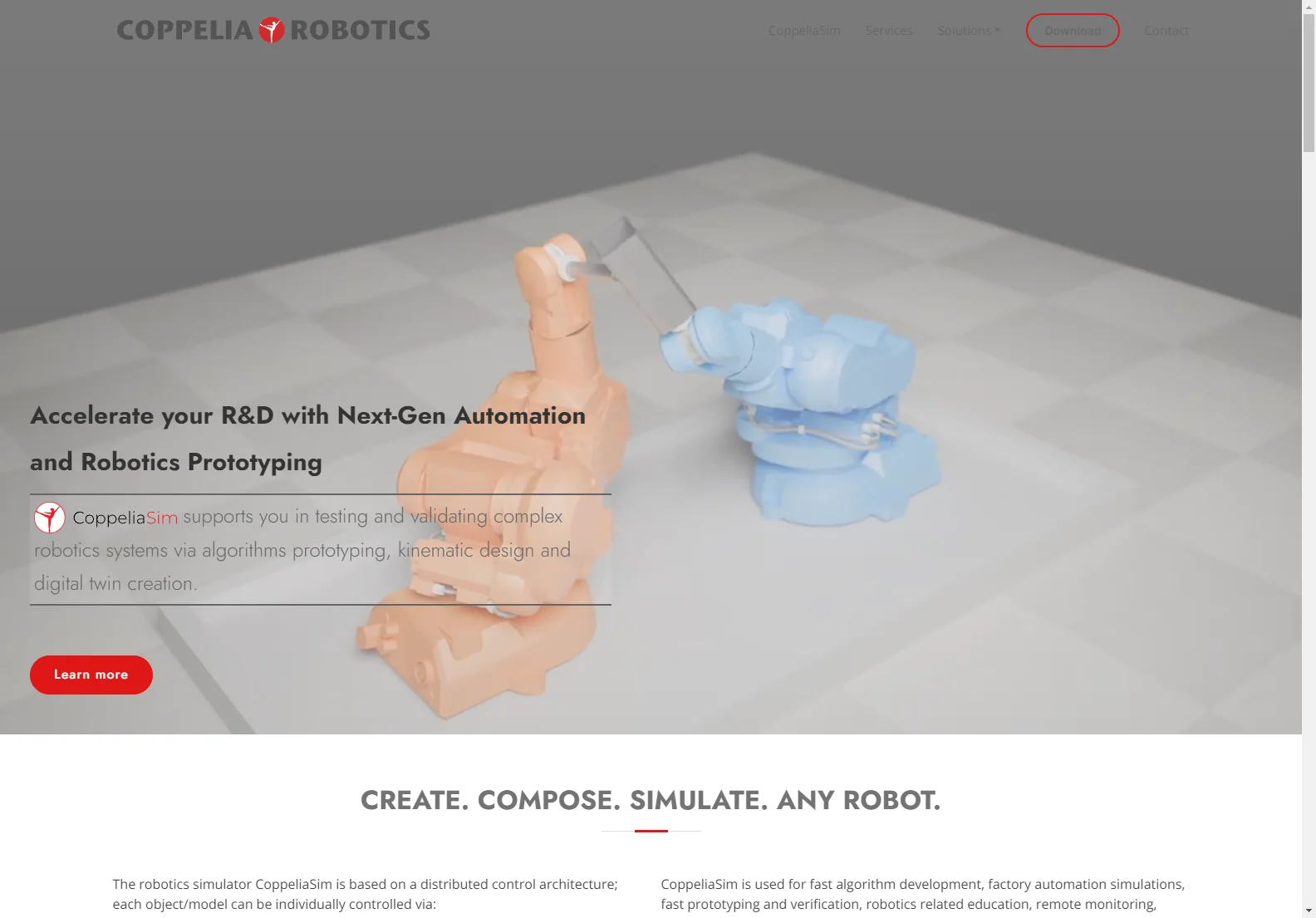CoppeliaSim stands at the forefront of robotics simulation technology, offering a versatile platform for developers, researchers, and educators. This next-generation simulator is built on a distributed control architecture, allowing each object or model within the simulation to be controlled individually through various means, including embedded scripts in Python or Lua, plugins in C or C++, and remote API clients supporting a multitude of programming languages such as Java, MATLAB, Octave, and Rust. This flexibility makes CoppeliaSim an invaluable tool for a wide range of applications, from fast algorithm development and factory automation simulations to robotics education and remote monitoring.
One of the key features of CoppeliaSim is its ability to facilitate the creation and testing of complex robotics systems. Through kinematic design and digital twin creation, users can prototype and validate their robotics projects with unprecedented efficiency. The simulator's support for multiple programming languages and custom solutions ensures that it can be adapted to meet the specific needs of any project, making it a preferred choice for professionals in the field of robotics and automation.
CoppeliaSim's applications extend beyond just technical development. It is also used for safety double-checking, ensuring that robotics systems operate within safe parameters before they are deployed in real-world scenarios. Additionally, the simulator serves as an educational tool, providing students and researchers with a hands-on platform to explore the principles of robotics and automation.
With its comprehensive suite of features and support for a wide range of programming languages, CoppeliaSim is more than just a robotics simulator; it is a complete ecosystem for the development, testing, and education of robotics systems. Whether you are a seasoned professional or a newcomer to the field, CoppeliaSim offers the tools and flexibility needed to bring your robotics projects to life.

